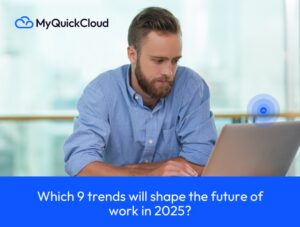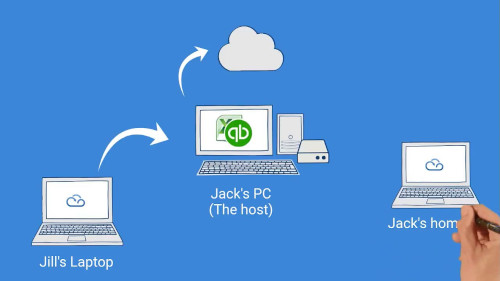We are living in an era of unprecedented change in the workplace. As technology advances and societal expectations shift, workplace trends hint at an adaptable, efficient, and humane workplace of the future.
Businesses will need to understand the trends set to dominate 2025 to remain competitive and foster an environment that encourages employee growth.
Here are the top trends that will reshape the workplace, along with their implications.
Resilience in career: Reskilling and upskilling
New skills are in high demand due to the emergence of AI and automation across industries. By 2025, more than half of all employees will need significant reskilling or upskilling.
As a catalyst for growth, companies that offer robust learning and development initiatives will attract and retain top talent. Businesses can future-proof their workforce and ensure employees are adaptable in an ever-changing environment by embracing a culture of continuous learning.
A radical new approach to work-life balance: the four-day workweek
Pilot projects across Europe have shown that a four-day workweek can reduce burnout and increase productivity. Ninety-two percent of UK companies that tried a four-day week continued it after seeing positive results (Owl Labs, 2023)
We might see a shift in standard work structures as more companies adopt this model, prioritizing balance and flexibility. Four-day work weeks are powerful tools for companies willing to embrace change.
Freelancing’s evolution: the freelance career path
Short-term, low-skill gigs are no longer the defining characteristics of the gig economy. According to forecasts, high-skilled freelancers are expected to make up a larger share of the workforce by 2025, seeking autonomy and diverse employment opportunities.
In 2021 and 2023, McKinsey found freelance workers grew 25%, highlighting a shift towards flexible, project-based work as traditional employment structures are replaced by new ones. Flexible work options will help companies attract top talent in this increasingly fluid environment.
Collaboration between humans and machines: enhancing productivity through artificial intelligence
It is clear that as AI capabilities grow, human roles will not simply be replaced by technology, but rather enhanced. The use of artificial intelligence is now seen as an enabler of productivity, allowing employees to free themselves from repetitive tasks and focus on more strategic, creative endeavors.
Using AI effectively can boost workplace productivity by up to 40%, according to a Deloitte report. In an increasingly automated workplace, organizations can make use of human skills such as empathy and problem-solving to enhance productivity.
In the AI age, human-centric leadership is essential
As artificial intelligence takes over traditional managerial tasks, leaders are being challenged to cultivate stronger relationships with their teams.
LinkedIn reported that leaders who prioritize empathy and emotional intelligence report higher team engagement and productivity. An employee-centric leadership approach ensures that employees feel supported and valued during technological transformations. Future leaders can move from task management to team empowerment, creating innovative and collaborative workplaces.
Online immersive workspaces: the future of remote work
The use of virtual reality and augmented reality is transforming remote work experiences. Despite physical distance, platforms such as Gather and Spatial create immersive digital spaces where teams can collaborate seamlessly. Over 60% of companies will enable dynamic meetings and remote training via immersive work platforms by 2025, according to Gartner.
While a “metaverse” may remain on the horizon, these technologies provide practical solutions for bridging physical and digital workspaces.
Managing talent with artificial intelligence: the next evolution
With AI, HR professionals can focus on strategic initiatives rather than routine administrative tasks. The use of AI-driven tools in HR departments can assist in the identification of top talent, tracking employee engagement, and supporting career development across all functions.
Nevertheless, human empathy remains crucial; successful HR teams will use AI to enhance, not replace, human judgment. As a result, HR becomes a key driver of organizational strategy, balancing efficiency with human interaction.
In the future, hybrid work will be the norm
Although some pushback has been received, hybrid work models remain popular. In a recent study conducted by Owl Labs, 58% of employees reported a high level of satisfaction with hybrid work. Organizations are realizing the benefits of both remote and in-person work, and hybrid structures are becoming more common. As employers refine their work-life balance models in 2025, they will offer flexible options that maintain strong cultural ties while improving work-life balance.
Workplace sustainability: Prioritizing environmental protection
As companies adopt eco-friendly practices to attract socially conscious employees, sustainability is becoming more important in the workplace. Over 70% of employees consider sustainability when choosing an employer, according to a study by Glassdoor. Business is finding ways to align their values with environmental goals, from reducing carbon footprints to implementing sustainable office designs. Today, companies seeking to remain relevant must embrace sustainability as a necessity.
A world of constant change emphasizes the importance of adaptability at the workplace. Through technology, organizations can build more resilient, inclusive, and sustainable workplaces.
As long as companies stay on top of these trends, they will be able to create environments that meet evolving employee expectations, embrace technological advancements, and encourage human growth.





